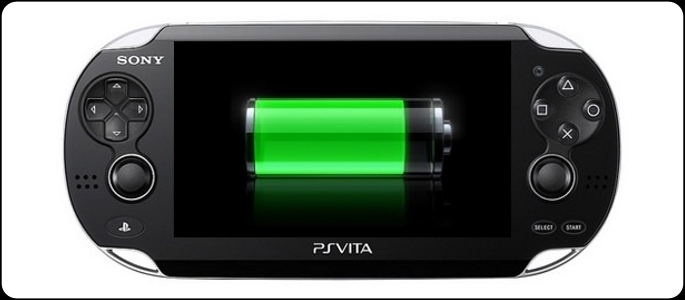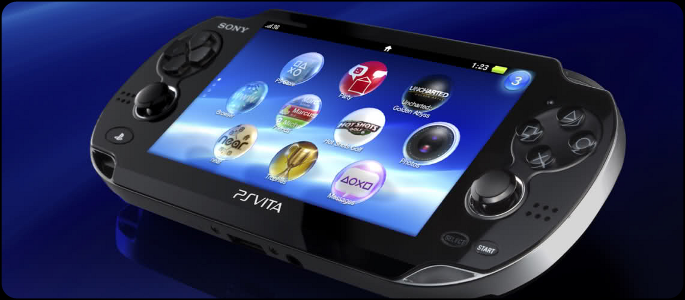So a bunch of us were out to dinner when Ryan from IGN checks his phone and declares, “Huh. So I guess the Vita has an external battery pack.” Everyone in our little clan agreed that this was a great move. We all chimed in our differently worded agreements before about two seconds of solid silence. I broke this with the reality check, “People are gonna be pissed,” which was met with another chorus of agreements, this time muffled by the sounds of palms on everyone’s faces.
The amount of Vita hype from consumers and media alike is already a good sign for Vita; it’s months away from launch, but the general consensus in the gaming world is that things in the present are looking good. Some, however, have taken issue with the battery life being three to five hours.
But for any business, the future is as important as the present. Sony is looking to plant seeds for the future with this move. At a price point of $250 and launch titles that appeal to the masses and the niche gamers alike, the Vita will arrive on the scene as a serious competitor. The simple fact of the matter is that the Vita is a mother loving powerful machine. Systems that powerful need more — wait for it — power to operate. I mean cripes, the little bugger can run Killzone 3, and I just played the impressive-looking Uncharted: Golden Abyss last week. A battery to power that thing for much more than the three-to-five hours would add a noticeable amount to either the physical size/weight of it, or worse, add to the cost.
In this next round of handheld “wars,” it’s critical for Sony to do with Vita what it couldn’t do with PSP: take more of the market share. Higher system sales are crucial to getting the brand out there into more hands of both “hardcore” and “casual” gamers alike. I’m using a lot of “quotes” because I think some of these modern “labels” are “silly.” Nintendo knows this, and it’s why the company grabbed the 3DS price and dropped it like it wasn’t hot. The PSP was outselling 3DS week in and week out in Japan and, with the Vita due out at the end of this year, Nintendo knew it had to grab as much market share as possible before another portable gaming device arrived on the scene. The lack of an expensive battery strong enough to give something like the Vita longer life helps Sony keeps the cost low, and size just a bit smaller, both of which make the device more appealing to the modern consumer.

Consider the netbook. It’s a trimmed-down laptop that has most of the key functions of such a computer. It’s a bit small in terms of keyboard and screen size, but it can do your emailing, downloading, music playing, word processing, video streaming, and other functions without a problem. You can get a decent one for less than $400. Those models do, however, usually come with a low-end processor, less RAM than a comparable laptop, lack of any disc drive, and other such snips; you won’t be playing Skyrim on the common netbook. But if you want a bighugelarge hard drive, longer-lasting battery, or other such boosts, they come at a cost. A CD/DVD drive might not be the newest technology in the world, but the parts aren’t free, the quality check department isn’t working pro bono, and bundling one with a computer comes at a cost, plain and simple. The same is true of most technologies, and that includes our gaming devices, which are becoming ever more computerlike with each passing year. The more features and more power you want, the more you’ve got to spend, and that’s just life.
I can understand the complaints, believe me. I commute to work by train for about an hour each way, during which I often like to play games. Then, at the school, if a class gets canceled or the schedule is rearranged for any number of possible reasons, I could end up with more free time on my hands. But dang, I won’t be able to play it on the way home if I play it too much on my breaks, so I’ll have to lug a charger too. Same thing when I fly from Japan to the states or Canada to visit family. Those are like 12-hour flights. So yeah, my lifestyle understands why lasting as little as three hours might be a bummer.
Thing of it is, it’s not a huge change from the present. The PSP 3000 has, what, like 4-6 hours of battery? I still find myself bringing a PSP charger with me on long bus rides and flights — sometimes the plug-in, sometimes the USB variety, but almost always something. I get by. I play games. I’m doing science. I’m still alive.
So all this comes together and the consumer now has options. The system is a low, market-friendly price for those who only want to pay $250. For the seriously high power that the Vita is packing, that with a four-hour battery is a fine deal. It seems like all I ever hear about from American gamers is that they play their handhelds mostly at home anyway, so it seems like a fine fit. Those who want longer battery life have the option to get out there and obtain it by doing what many gamers seem to feel is unthinkable: paying what something is actually worth.








